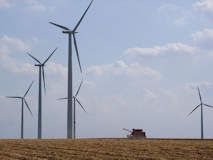
In 2011, global oil and gas capital expenditure (capex) registered a sharp increase of 14% compared with 2010. This growth trend by global oil and gas companies is expected to continue, with a further 13% rise in capex anticipated in 2012. This increase will primarily be driven by high, sustained crude oil prices.
As the availability of crude oil and natural gas from onshore fields declines, more complex and expensive technology will be required to produce oil and gas from deep and ultra-deep offshore areas, and unconventional sources such as oil and gas shales, oil sands and coal bed methane. It is estimated that in 2012 the global oil and gas industry will register a total capex of $1.026bn.
Capex growth
Looking at this growth more closely, it becomes obvious that much of this 13% increase is being driven not only by national oil companies (NOCs), but also by integrated oil companies (IOCs) and independent oil companies.
Most oil and gas companies across the globe are undertaking the construction and development of capital-intensive, upstream, midstream and downstream projects.
NOCs and integrated oil companies will register the highest expenditure, accounting for 84.6% of global oil and gas capex in 2012. In terms of capex growth in 2012 over the last year, capex from independent oil and gas companies will increase from $131bn in 2011 to $158bn in 2012, representing growth of 20.6%. Capex from NOCs will increase from $448bn in 2011 to $513bn, up by 14.5%. Integrated oil companies will increase capex by 7.9% from $329bn in 2011 to $355bn in 2012.
See Also:
Crude oil prices have remained above $90 a barrel for the past year due to increasing global crude oil demand coupled with supply constraints. According to the IMF, crude oil prices will remain high in 2012 as a result of supply disruptions in the global oil markets, increasing demand in emerging economies and production constraints in a number of oil-exporting economies. The IMF expects the average global oil price to be $110 a barrel in 2012.
How well do you really know your competitors?
Access the most comprehensive Company Profiles on the market, powered by GlobalData. Save hours of research. Gain competitive edge.

Thank you!
Your download email will arrive shortly
Not ready to buy yet? Download a free sample
We are confident about the unique quality of our Company Profiles. However, we want you to make the most beneficial decision for your business, so we offer a free sample that you can download by submitting the below form
By GlobalDataIn 2011, global crude oil demand increased along with supply disruptions due to crisis situations in several Middle Eastern countries such as Libya, Egypt, Bahrain and Tunisia. The resulting supply-demand imbalance led to an increase in global crude oil prices. The situation improved marginally in the wake of the disaster in Japan, which affected the operations of many of the country’s refineries and led to their closure for maintenance.
As oil supply from countries such as Libya is yet to return to pre-crisis levels, the supply-demand imbalance has not eased in the global market.
Wind power
With sustained high oil prices, investment in other forms of energy – wind in particular – is on the increase. Wind power has now emerged as a dominant player in the global energy market; the growing equipment market in particular has created a large number of employment opportunities.
Over the last decade, wind energy has become the decisive force in the power sector and an important alternative in planning for the future of the global electrical power sector.
Globally wind energy added around 39GW of capacity in 2010. In 2011, added capacity was around 41GW. Annual capacity is expected to increase by 12% in 2012 compared with 2011. The annual capacity in 2012 is expected to be around 46GW.
With this trend expected to continue beyond 2012, many suppliers to the oil and gas industry have recognised the potential of the wind sector and have moved swiftly to secure their slice of the overall market. Large oil companies such as Statoil have invested heavily in wind turbine technology, while other organisations such as GE Energy and Siemens, both suppliers to the oil and gas industry, have also achieved significant market share in the wind sector.



